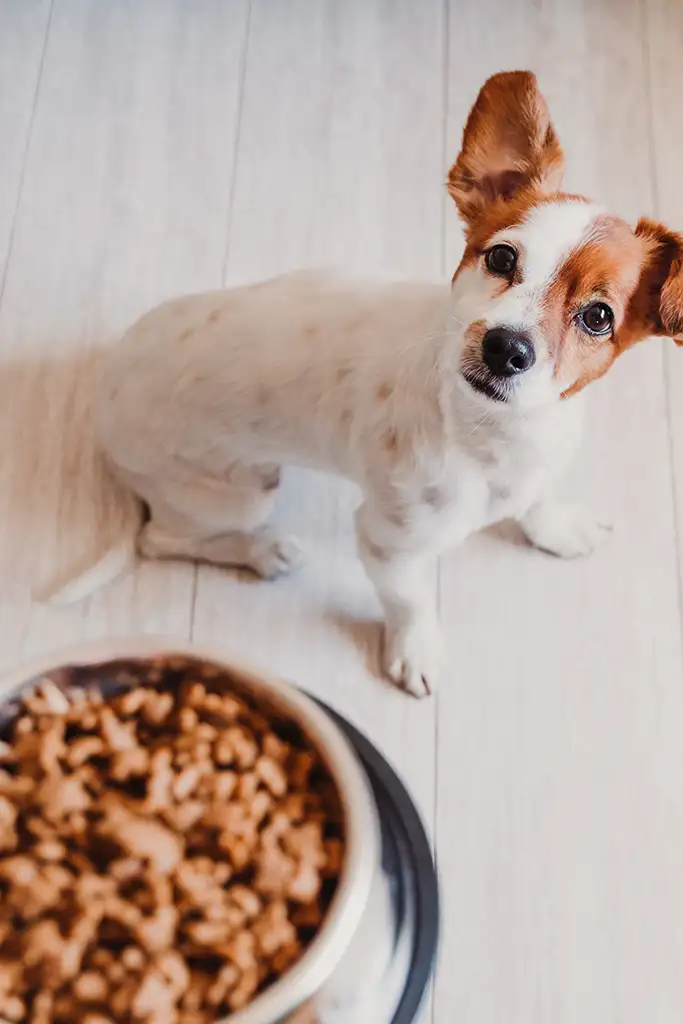Can Dogs Get Poison Ivy? And What’s The Best Way To Treat It?
Quick Guide
Encountering flora and fauna on your dog walks is a typical scenario, but bumping into poison ivy plants can make these walks very frustrating for all the parties involved.
Most pet owners overlook poison ivy during their stroll, often resulting in mild to severe allergic reactions and itching. Luckily dogs aren’t at a higher risk, but the transmission can affect human beings by targeting their allergic receptors.
Thus, if your dog is continuously itching or you suspect spotting poison ivy on your route, we highly recommend reading this article to tackle this situation before it worsens.
Can Dogs Get Poison Ivy?
Yes! Plants like poison ivy can affect people and animals exposed to them.
The main culprit is the oil from this plant which causes allergic reactions, itching, and red rashes. This poison ivy plant can actively release the oil even while the dog is merely brushing against the leaves.
Apart from that, Urushiol- a gummy oil found on the berries and stems of poison ivy can initiate several allergic reactions. This oil tends to remain on fabrics, furs, and objects for a very long time, thus increasing the chances of exposure even after days.
Animals, especially dogs, can get exposed to this oil even while walking. Fortunately, their thick coat or fur saves them from getting affected. Thus, it is safe to say that most dog breeds do not get affected by poison ivy. However, some dogs with a thinner coat or exposed skin can showcase signs pointing towards allergic dermatitis. In such cases, the dogs need proper treatment to cure their rashes and itchy bumps.
On the other hand, dog owners have to be highly cautious as most humans are allergic to Urushiol. If your pet dog is exposed to poison ivy, chances are you are at a high risk of developing an allergic reaction.
Note: As mentioned above, poison ivy reactions don’t appear on dogs, but a few dog breeds are indeed at high risk for poisoning. Dogs like the Chinese Crested, American Hairless, Peruvian Inca Orchid have less hair than other breeds making them highly susceptible to poisoning.
What Does Poison Ivy Look Like?

It is imperative to identify the poison ivy plant to avoid poisoning risks altogether. We recommend learning about the plant’s shape, leaves, and general characteristics to spot them before your dog touches the plant.
Since the plant can thrive in most climates, you can find them in fields, wetlands, forests, and even in your backyard. One easy way to spot the plant is by identifying their jagged green leaves that grow in a set of three.
How to know if your dog has poison ivy?
The main reason for poison ivy poisoning is the presence of Urushiol oil. The classic symptoms of poisoning highly vary from breed and mode of contact. Skin contact usually showcases different symptoms than cases of ingestion.
You will find rash/rashes on a typically less hairy part of your dog. The legs and belly area are the main areas where a poisoning rash can appear. These rashes can take a few hours to emerge after the contact and stay on your pet for many days. Some other signs that suggest poisoning from poison ivy include:
- Itching
- Inflammation
- Red skin/ patches
- Raised bumps
- Scabs
- Blisters
- Vomiting
- Diarrhea
- Constant licking, scratching, and chewing the skin
It’s important to note that poison ivy has the strength to cause anaphylaxis reactions in dogs. This condition can be highly life-threatening if your pet is already riddled with any chronic disease.
If you notice severe or heightened signs of itching, inflammation, or patches, we highly recommend taking your pet to a veterinarian instead of treating them at home.
How can you treat poison ivy on a dog?
Bathing your dog has to be the most effective way to eliminate the pesky oil from your dog’s fur. Bathing will indeed prevent further exposure, all while cleaning your dog. However, we do not recommend bathing your dog without any protective gear. Since the oil is highly contagious, you need to keep yourself safe while showering them. Follow these steps for a proper and safe poison ivy treatment.
#1 : Bathing Treatment
Step 1: Protecting yourself
Wear a thick pair of nitrile or rubber gloves before touching your dog’s fur. Apply a protective layer of lotion and cream on your exposed skin that isn’t protected by the gloves. Consider wearing a full-length gown or a long-sleeved shirt for maximum protection.
Step 2: Protecting the dog
Since the bath requires you to brush out all the oil buildup quite vigorously, you should consider protecting your pet’s eyes. Any mineral oil or eye lubricant can protect their eyes from the harsh chemicals and sting of the shampoo.
Step 3: Bathing
Start the treatment by rinsing your dog with lukewarm water for some time. This step will saturate the coat with water till the inner layers. If your dog has thick fur, you might have to do this step for a long time. Opt for a natural, degreasing shampoo that will break up the oily coat of poison ivy on your dog’s fur. If your dog isn’t allergic to Dawn dishwashing detergent, we recommend using it. Dawn detergent can be an effective cleansing agent to ward off the oils. If your pet is extra sensitive, choose a botanical keratolytic shampoo that is specifically designed for pets. Massage the shampoo or cleaning agent into the coat to break down all the buildup. Ensure that you wash all parts for a thorough cleaning. Finally, rinse your pet with lukewarm water and pat dry the fur.
#2 : Oatmeal bath
A pure oatmeal bath is an excellent choice for dogs that show symptoms of skin irritation and itchiness. These baths help soothe any redness and itchiness in mere one sitting. This bath will develop a thick protective barrier that further prevents dehydration of the skin.
Step 1: Grinding
Start by grinding plain oatmeal into a coffee grinder till it becomes a powder. Ensure that you are using non-flavorful quick oats.
Step 2: Preparing the bath
Fill the tub with lukewarm water and add a few spoonfuls of plain oatmeal powder. You can multiply or decrease the quantity according to your dog’s size. Mix the slurry thoroughly and some oil or cream for extra nourishment.
Step 3: Massaging the dog
Gently massage your pet with the mixture and coat every inch of your dog with the oatmeal paste. Let the oatmeal nutrients and moisturizing elements soak into the dog’s fur for 10-15 minutes. Gently wash the paste with lukewarm water and pat dry your pet.
Step 4: Monitoring the dog
You need to monitor your dog after these baths for a couple of days. Most owners successfully get rid of the poison ivy within one bath; however, if your dog still shows signs of irritation, scratching, or rashes, we recommend consulting a veterinarian. Vets will usually suggest an effective topical cream to relieve the symptoms.
Can humans get poison ivy from dog’s fur?
Yes, it is possible to get poisoned by poison ivy via your dog’s fur. Pets usually aren’t at risk of severe allergic reactions, but humans tend to show moderate to extreme reactions after coming in contact with the plant or plant’s oil.
We highly recommend being cautious while hiking or walking with your dog in any area ridden with poison ivy.
General prevention tips to avoid transmission
- Avoid petting your dog if you think they have come in contact with poison ivy.
- Wear gloves and protect yourself while giving them a thorough bath.
- Ensure that your dog doesn’t walk into thick bushes that can be a breeding ground for poison ivy.
- Always wash the collars, leashes, or harnesses with cleaning agents to remove any poison ivy oils saturated into the material.
- Try to walk with a leash and avoid releasing the leash during the walks.
- Never let your pet wander outdoors alone.
- Keep an eye on the bushes and grass. Make a habit of identifying the poison ivy during your dog walks.
Do dogs eat poison ivy?
Yes, sometimes your overexcited dog can chomp down a leaf of poison ivy because of its curious nature. The results, however, can be very upsetting for the dog. Usually, pets that eat poison ivy suffer from diarrhea, vomiting, and mild gastrointestinal issues.
The side effects of poison ivy can also depend on the quantity of the ingested product. We recommend visiting a veterinarian to start the treatment if your dog has ingested a heavy amount of poison ivy. Keep a detailed track of their bowel movements and call the vet if the health fails to improve.
Recovering from the poisoning of poison ivy
Dogs usually recover from poison ivy without any significant health drawbacks. They may require a few days to heal from the spots and redness, but proper aftercare will surely speed up the recovery process.
If you notice a recurrence of poison ivy, try searching your neighborhood or backyard for the plant. We recommend opting for dog sweaters if your dog has thin fur or is very susceptible to poisoning.
Conclusion
We hope our guide on poison ivy helped you in understanding the severity of the poison. Keeping your dogs safe beforehand can be an excellent way to avoid poisoning altogether.
If your dog has encountered the oils, kindly follow the steps mentioned above to ward off the oils from their fur. Lastly, pet owners should also pay attention to other dangerous plants like poison oak and poison sumac, apart from poison ivy.
References:
Better Pet / Poison Ivy in Dogs










